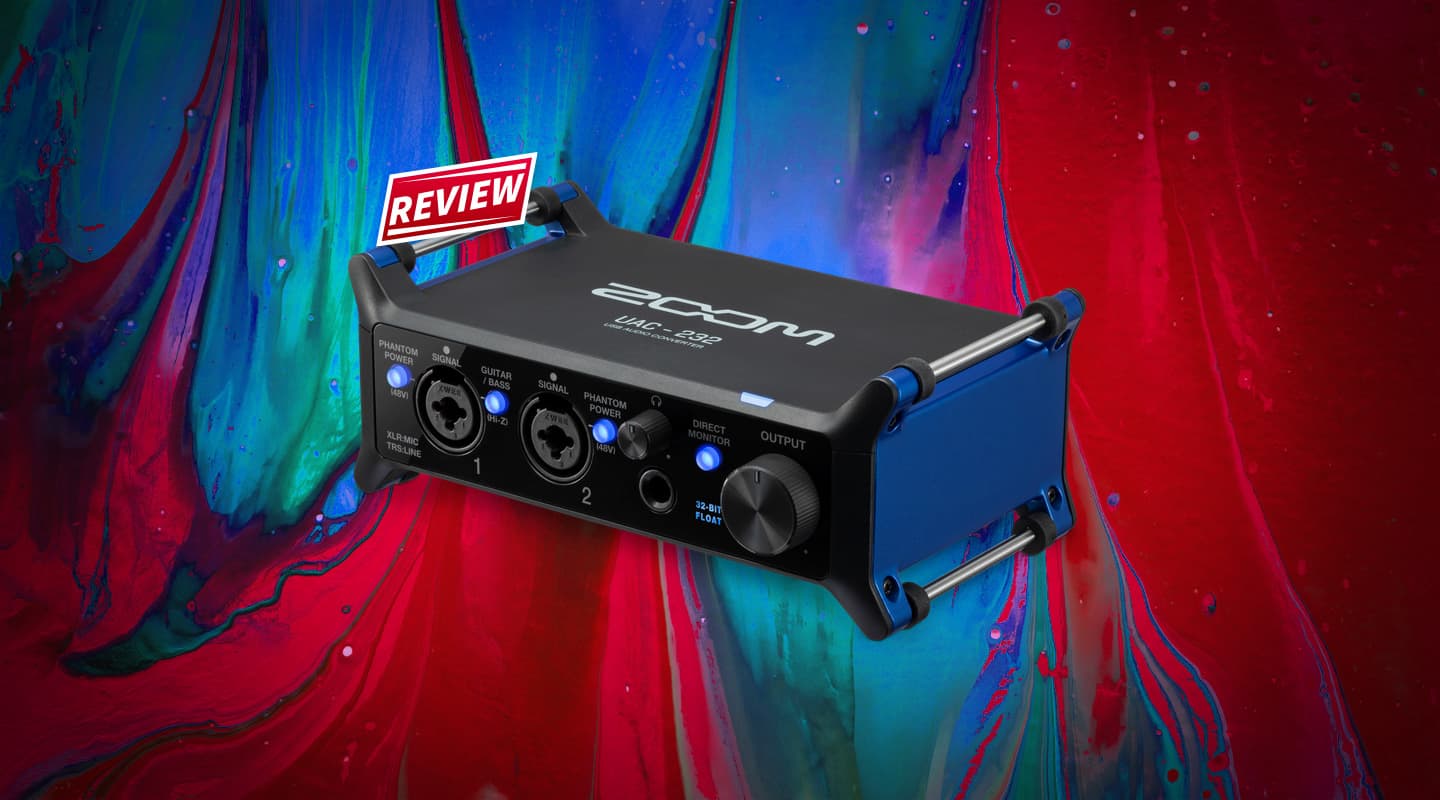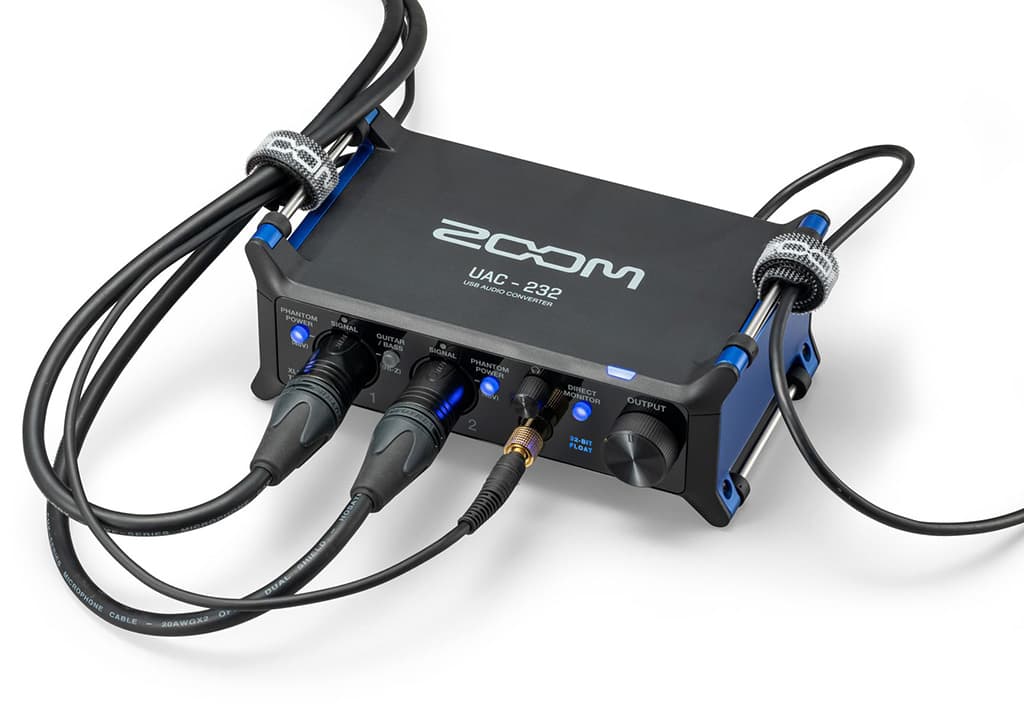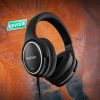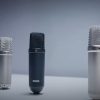
Review: Zoom UAC-232
A 32-bit audio interface that doesn’t break the bank.
Review: Corey Hague
The poor old audio interface has the most important, least glamorous role in the entire studio. It’s expected to do its job flawlessly each and every time, and it only receives any attention when it’s not functioning properly. Otherwise it will toil away for years, often outlasting the computer it’s plugged into.
The Zoom UAC-232 probably isn’t going to change how the world views audio interfaces, but it is quietly raising the bar for affordable audio interfaces that do more than just allow you to get sound in and out of your device.
What tricks does the UAC-232 have up its sleeves? For starters it’s fully USB-C compliant, which, although it’s becoming standard, is definitely worth celebrating.
But the brightest feather in the UAC’s cap is 32-bit float recording – it even proudly declares the fact on the front of the unit, so you know it’s a feature Zoom is excited by. Zoom claims that it’s the first dedicated 32-bit float audio interface.
BIT BY BIT
Aside from being a pioneer in bit-depth, the UAC is fairly typical of most small audio interfaces. It includes two XLR/TRS combo inputs, full-size MIDI in and out ports, a headphone output with its own volume knob, stereo TRS main outputs, and a main output volume knob. It makes use of Zoom’s F-Series preamps and features a dedicated button for direct monitoring. Loopback functionality lets you record playback audio from your computer. There’s also an extra USB-C port for powering the device on lightning devices and a security port.
Following on from many of Zoom’s portable recorders, the UAC has familiar rails allowing it to be used horizontally or vertically, as well as mounted to mic stands or tripods. Simple velcro straps would be enough to fix it to most surfaces you could think of. It’s able to do this because it’s surprisingly lightweight, although after using it while travelling it’s thankfully not flimsy. I could happily sling it into a backpack without any fear of it adding weight or becoming damaged in transit.
The UAC was instantly recognised and available to use with both an iPad Pro and a recent generation MacBook Pro, without the need for any software installation or drivers – just plug it in and away you go. Using it across various DAWs and editors, it happily did everything I asked it to, including recording some synthesizers and voiceover, as well as playback of various sources.
NEED TO KNOW
Zoom UAC-232
32-Bit Audio Interface

NO DRAMAS
One highlight of the unit is how free of drama it is when plugging and unplugging the unit. Some peripherals become very precious when constantly being hot-swapped between devices or locations, but the UAC offers up no theatrics or cascading warnings, it just lights up and works. This is good news, because an interface like this really shines when it’s quick and easy to use.
So far so good, but to not take advantage of the vaunted 32-bit float recording option seemed silly, so a quick install of Zoom’s Mix Control software and it was time to see if 32-bit would float my boat. After enabling 32-bit float in Ableton Live’s preferences and recording some synth sounds, it became clear that the benefits of 32-bit float recording haven’t been oversold.
In the simplest terms possible, the headroom that 32-bit float offers is striking. You’ll struggle to clip a signal no matter how poorly you’ve controlled the gain, and you can raise the volume of quiet signals to impressive levels. It won’t solve every problem that comes with recording audio, but it will solve most of them. And like all good technological improvements, the magic trick is actually quite subtle – the audio you record with it has more flexibility and latitude rather than any special sparkle or shine. 32-bit recording simply offers a more forgiving chunk of audio data that you have to work with.

STAYING POWER
It’s this new reality that makes the UAC-232 an appealing interface for different types of users. Podcasters and streamers would benefit hugely from the simplicity and ability to ‘set and forget’, as well as venues who want a quick and dirty way to record an event that is likely to fluctuate in volume. Not needing to ride faders or watch for clipping will be appreciated by people juggling tasks.
And for someone often working on the road, it’s got everything you’d want for most situations you’d encounter. The extra flexibility of 32-bit float recording means it’s easy to be confident about capturing what you need without spending too much effort fiddling with settings or levels.
Zoom has a solid history of tweaking a product category to be more affordable, easier to use or more portable, and they’ve done it again with the UAC-232. It may be the first dedicated 32-bit float audio interface on the market, but the technology is here to stay.


























RESPONSES